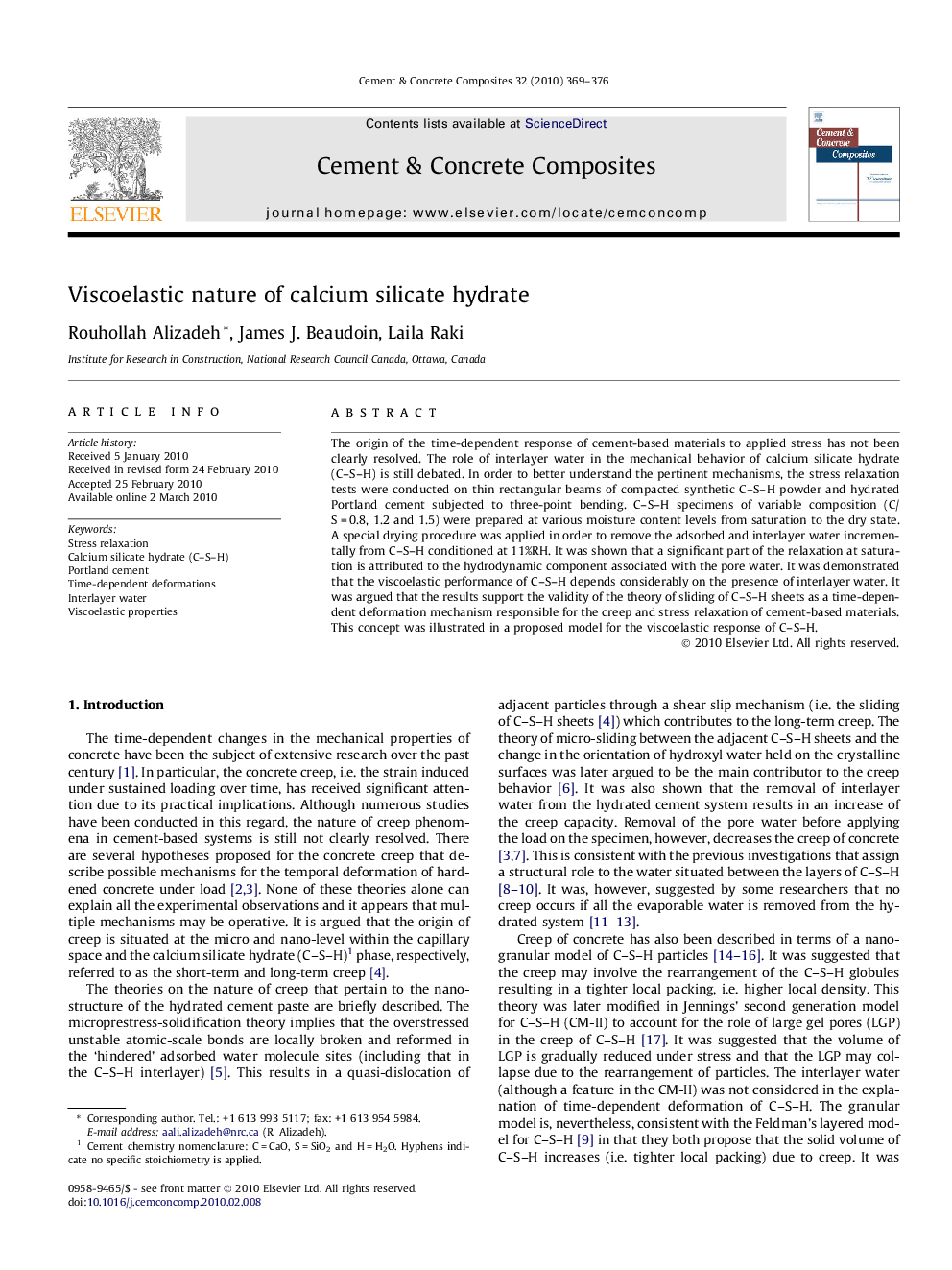| Article ID | Journal | Published Year | Pages | File Type |
|---|---|---|---|---|
| 1455311 | Cement and Concrete Composites | 2010 | 8 Pages |
The origin of the time-dependent response of cement-based materials to applied stress has not been clearly resolved. The role of interlayer water in the mechanical behavior of calcium silicate hydrate (C–S–H) is still debated. In order to better understand the pertinent mechanisms, the stress relaxation tests were conducted on thin rectangular beams of compacted synthetic C–S–H powder and hydrated Portland cement subjected to three-point bending. C–S–H specimens of variable composition (C/S = 0.8, 1.2 and 1.5) were prepared at various moisture content levels from saturation to the dry state. A special drying procedure was applied in order to remove the adsorbed and interlayer water incrementally from C–S–H conditioned at 11%RH. It was shown that a significant part of the relaxation at saturation is attributed to the hydrodynamic component associated with the pore water. It was demonstrated that the viscoelastic performance of C–S–H depends considerably on the presence of interlayer water. It was argued that the results support the validity of the theory of sliding of C–S–H sheets as a time-dependent deformation mechanism responsible for the creep and stress relaxation of cement-based materials. This concept was illustrated in a proposed model for the viscoelastic response of C–S–H.
